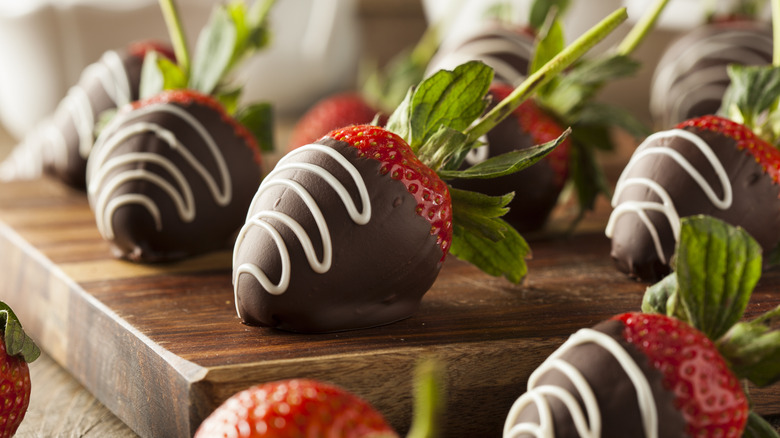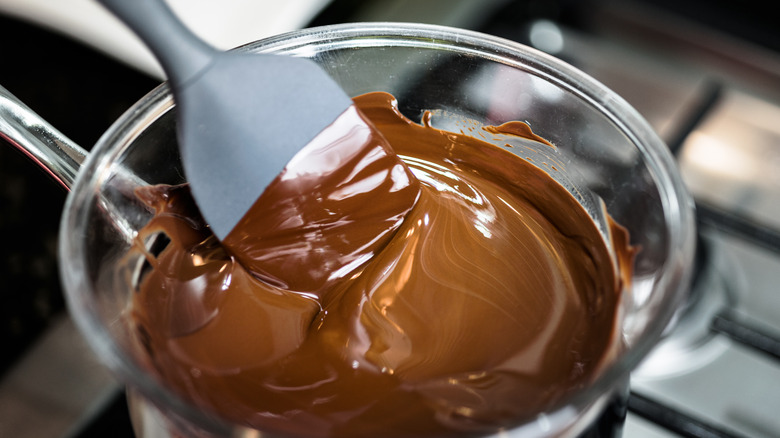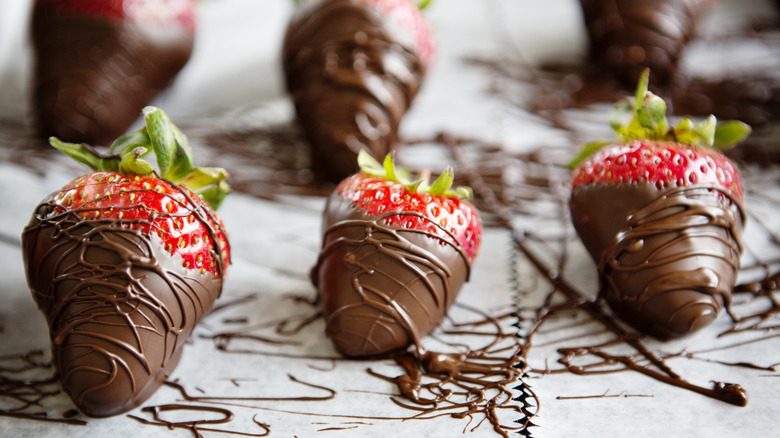The Rich Ingredient You Can't Skip For Chocolate Covered Strawberries
If you've ever tried making chocolate-covered strawberries before, then you know how difficult it can be. If you're not careful, your gorgeously crafted creations can wind up with lumps in the coating, or they may not have that shiny, glossy finish you're looking for. The good news is that there's an easy workaround you can use — mix shortening into your melted chocolate.
Although it might sound like an odd addition, shortening is what helps the confection to harden on your fruit. Better yet, adding it can help you avoid seizing, which is often caused by water, which is chocolate's worst enemy when you're cooking. As melting chocolate usually requires a double boiler situation, this can be all too easy to happen. Beyond these practical perks, adding a bit of shortening also has an aesthetic benefit. It leads to a smoother, glossier finish that makes the treats look as good as they taste.
How to add shortening to chocolate
You don't need much shortening in your melted chocolate to start reaping the benefits of the ingredient. Just adding ½ teaspoon of shortening for each ounce of chocolate you're melting should be enough to get a smooth and more workable texture. One thing to note here is that when adding shortening to your chocolate, you want the ingredient to be at room temperature. Unlike oil, shortening is solid at room temperature, which helps your chocolate remain hard once you've finished making your dessert.
It's also important to be aware that if your chocolate seizes up during the cooking process, you can introduce a bit more shortening in the mix to counteract the phenomenon. Let the fat melt into the chocolate and stir it until it's combined. As you work the treat, you should notice that it starts to restore its smooth, glossy consistency, saving you from having to throw out your work and start again.
Other replacements for shortening when making chocolate covered strawberries
If you're whipping up your favorite chocolate-covered strawberries recipe and don't have shortening in the pantry, don't panic. There are a few substitutes you can use to get the same effect. Not only is coconut oil the secret to the best banana bread, but it also works as a replacement for shortening. Since coconut oil is solid at room temperature, it can help the chocolate remain firm once it's cooled on the exterior of your chocolate-covered strawberries.
Another option is to go with butter. Much like the other fats, it can help smooth out the chocolate and aid in hardening. Plus, it introduces additional rich flavor into your sweet that you won't get from the more neutral taste of shortening. And it gives that glossy exterior to your treat that makes them look more appetizing.
Finally, you can also go with plain oil as a swap. Just note that since this ingredient is liquid at room temperature, it may not help your sweet firm up the same way. Plus, it doesn't do much in terms of flavor for your fruit. Whether it's coconut oil, shortening, or butter you use, the next time you make chocolate-covered strawberries, don't forget this quick tip for an instant upgrade to your dessert.


